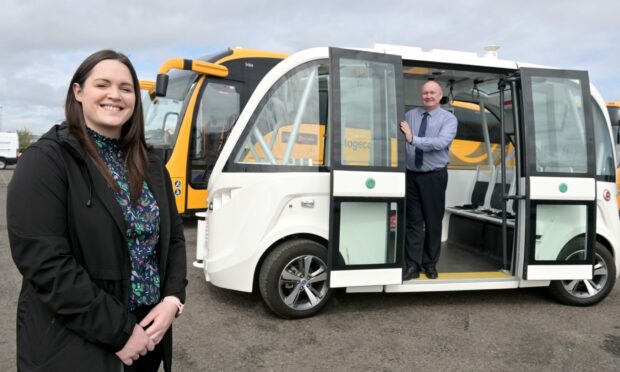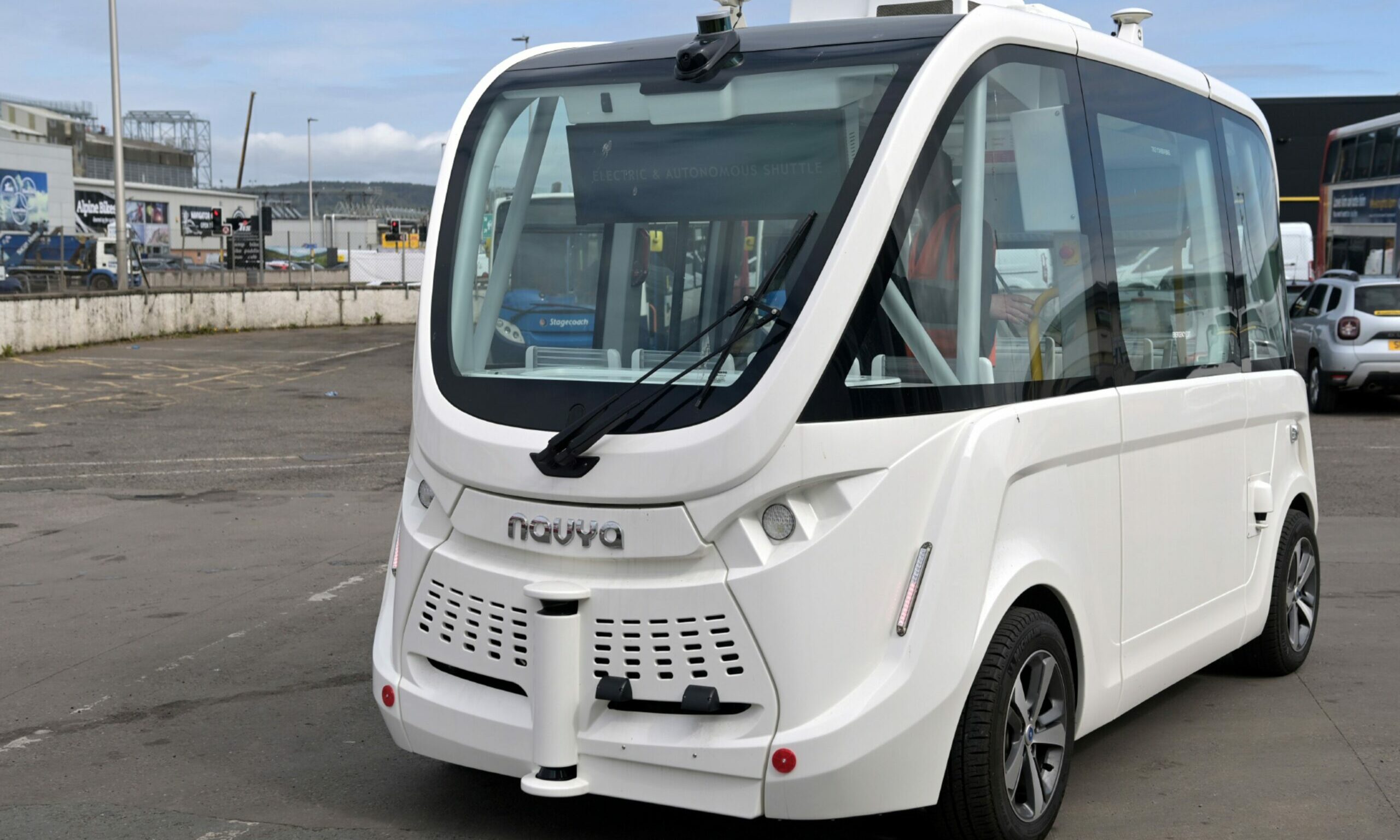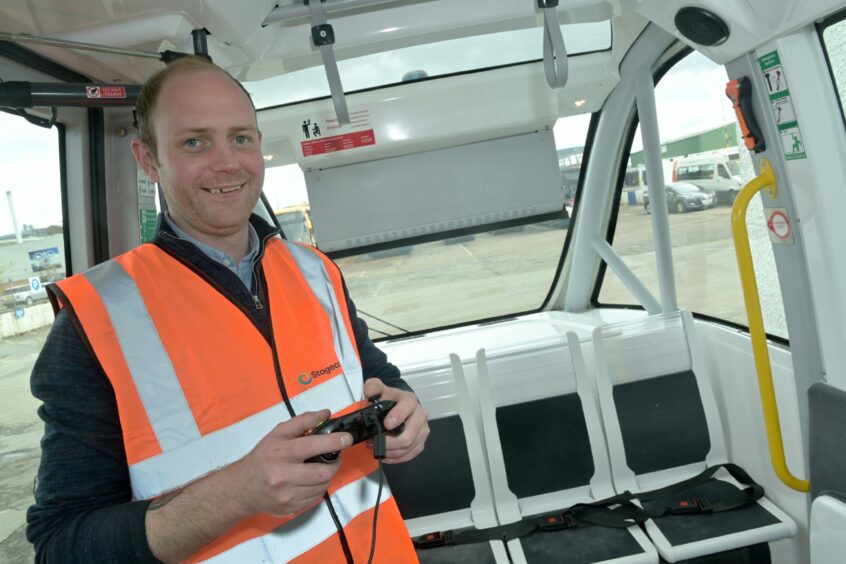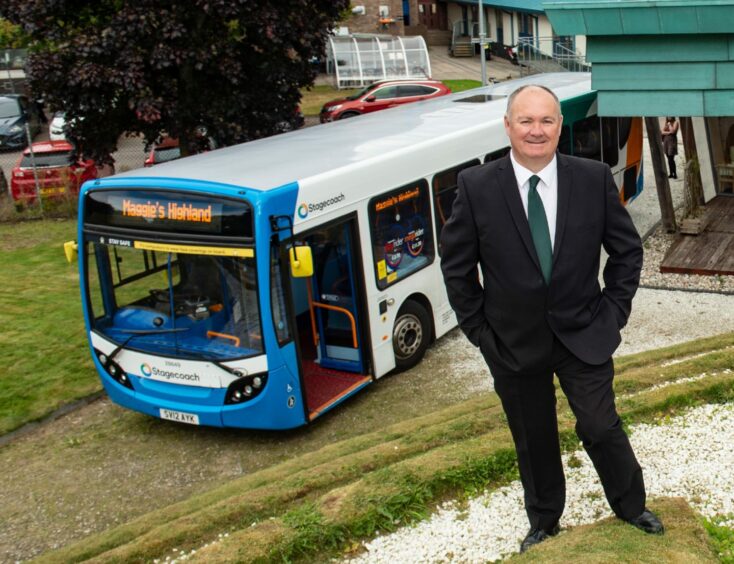Stagecoach bus drivers have had their first demo of a new driverless bus in Inverness.
The new Navya electric shuttle will soon be carrying students between Inverness Campus and Inverness Retail park in a pilot scheme.
Press and Journal reporter Donna MacAllister joined the Stagecoach crew to take the wee white bus for a spin around Stagecoach Highland’s Seafield Road depot in Inverness to find out a bit more about it…
No steering wheel, seat or brake pedals…
The futuristic vehicle does not have a steering wheel, driver’s seat or brake pedals.
It is all done by computer and controlled by a satellite navigation system with sensors attached to the vehicle which pull it to a stop when it detects obstacles on the road.
It also knows how to accelerate after confirming the coast is clear.
But despite having the capability to drive autonomously, a driver, or operator, must be on board ready to take over.
And on the Inverness driverless bus, this involves the use of a rather familiar-looking controller device…
It uses the same controller you would use for your Xbox
Surprisingly, the controller for the bus is literally the same as the handset for an Xbox console.
As a safety precaution for its demo with the P&J, Stagecoach Highland’s chief engineer Dave Simpson used the Xbox controller and took manual charge of the vehicle, instead of using the completely autonomous function.
All aboard and ready for take off
The interior of the bus feels similar to the shuttle buses used to take passengers from the runway to the airport terminal.
The seats on the Navya vehicle, which was developed in France, are petite, and it is marketed as being capable of carrying 15 people and able to drive for nine hours on a single charge.
It will operate at a maximum speed of 15 mph as part of the pilot programme, which is scheduled to last until Spring.
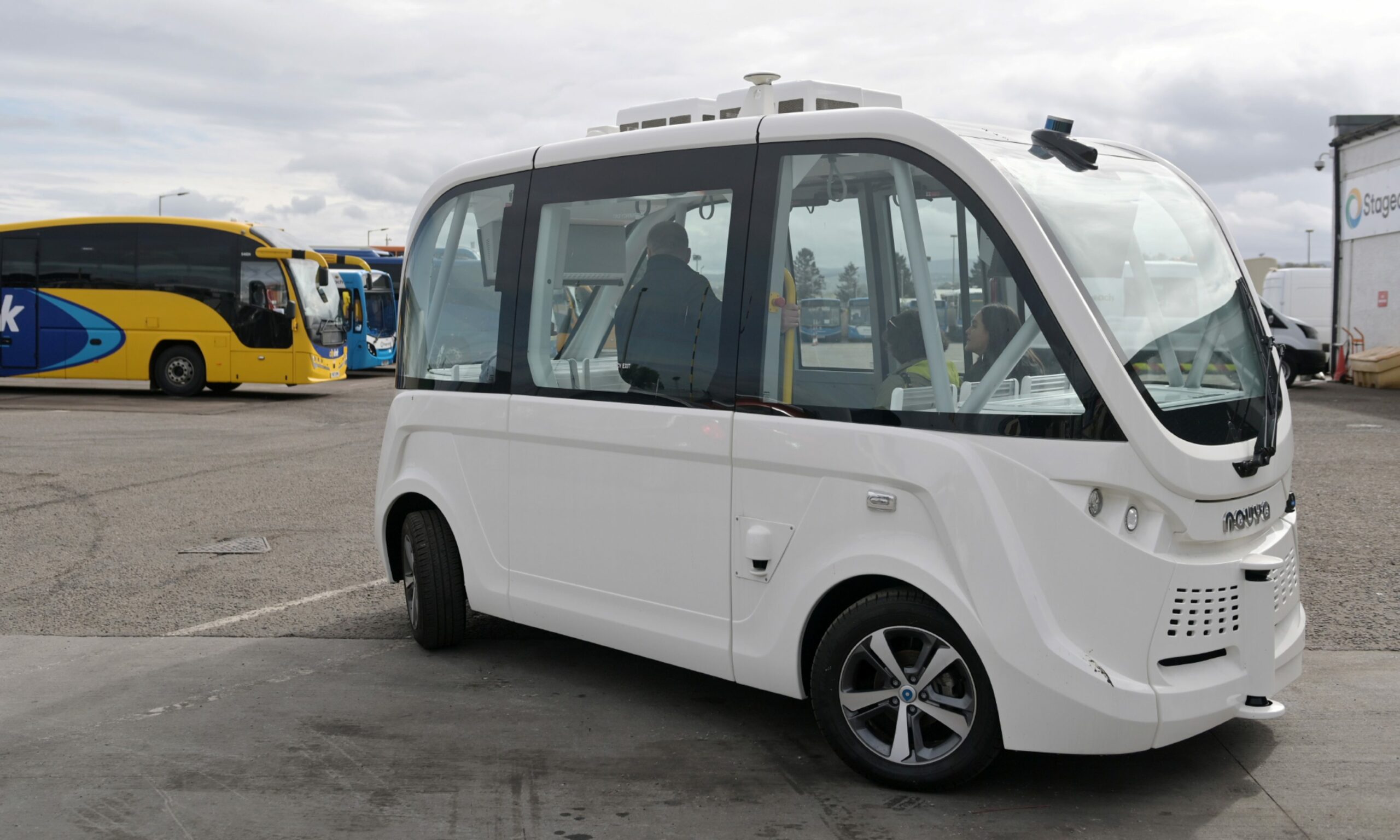
The double doors fold to a close and we begin to move, Dave’s brow gets all furrowed with concentration.
We get off to a jolty start as Dave struggles to find the sweet spot for the brakes.
‘Easier than driving a bus’
The ride soon smooths and Dave starts to get the hang of the Xbox control pad.
“It’s actually easier to drive than a normal bus,” he says.
“It’s so easy, it’s just like going back to my youth and playing my Xbox.”
Why Inverness and why driverless?
It seems like a futuristic scenario, but a driverless reality seems not too far off.
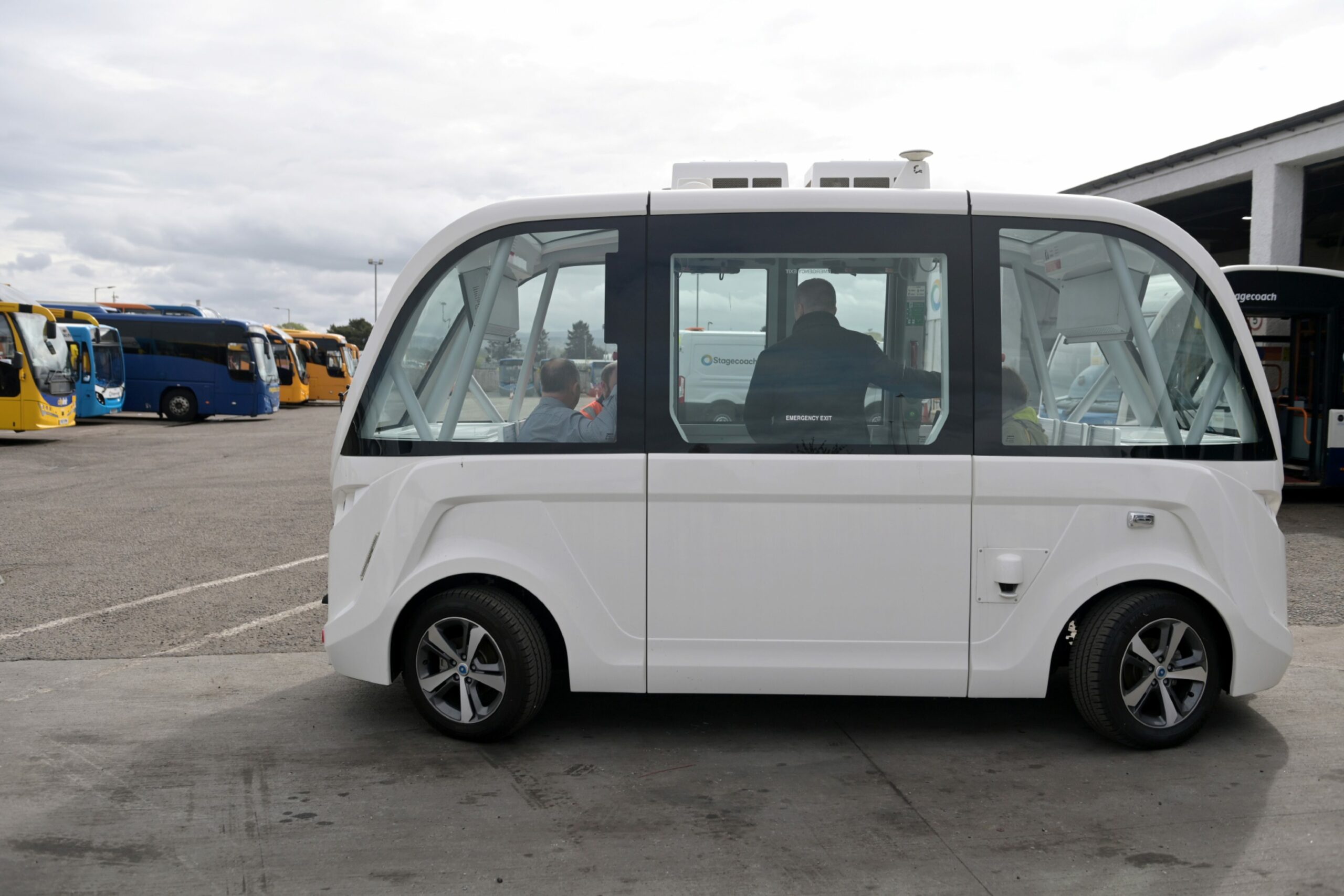
With automated vehicle technology set to play a major role in the transport revolution happening today across the UK, the Highlands & Islands transport partnership (Hitrans) wants to learn how to integrate this kind of vehicle into the region’s public transport system.
So it secured funding from the European Regional Development Fund to take the Navya driverless bus out on loan to try it out.
Can this mode of transport complement what we already have?
Project manager Jayne Golding said the aim was to see if a fleet of shuttles like this one might be used to serve cut-off communities in the Highlands & Islands.
We asked who would be liable insurance-wise if the Inverness driverless bus crashed or if somebody got injured.
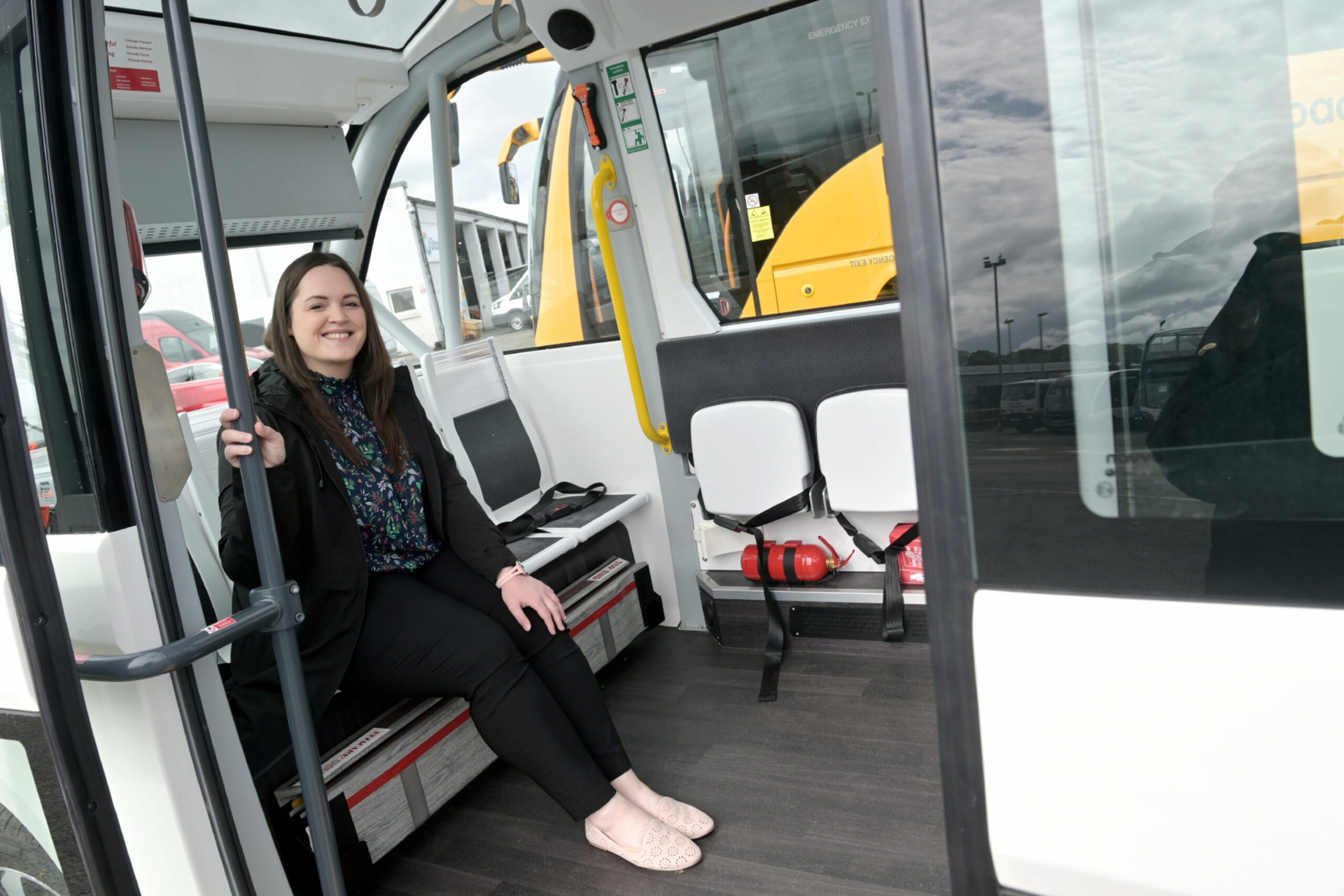
Jayne said: “All liability insurance is fully covered as part of the project.
“The safety protocols for the service are very stringently set before any operation is permitted in the UK.”
Cost of shuttle bus trial scheme
Hitrans said the shuttle value is €173,643, which equates to just a touch more than £148,000.
It is being funded through the Interreg North Sea Region PAV project under the European Regional Development Fund.
VIDEO: A Navya doing its thing in Japan
‘I definitely want a shot’
Stagecoach Highland managing director David Beaton, who started his 33-year career behind the wheel of big diesel buses, said he and five of his Stagecoach drivers would be trained to operate the Inverness driverless bus.
“I definitely want a shot of it,” he said.
“I’m a big kid at heart.”
